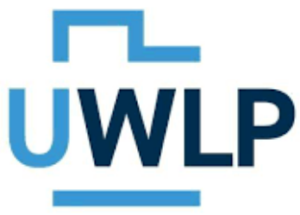Utah State University Study Examines the Status of Women in State Government
Posted on Aug 19, 2020 | Comments 0
 A new research study from Utah State University’s Utah Women & Leadership Project (UWLP) reports that state government leaders are implementing strategies to diversify gender leadership, but there is still a long way to go.
A new research study from Utah State University’s Utah Women & Leadership Project (UWLP) reports that state government leaders are implementing strategies to diversify gender leadership, but there is still a long way to go.
The study analyzed gender representation across 3,850 leadership positions within 53 Utah state agencies. Researchers were interested in understanding how women are represented in formal leadership roles within governments in Utah. The goal was to document a baseline of the number of women in leadership roles to track the progress made and help make improvements in the future.
The research findings identified that women hold 39.3 percent of supervisory, managerial, and leadership positions in Utah government. Women comprised 41.2 percent of front-line leadership positions, but just 27.1 percent of cabinet-level roles.
 Susan Madsen, founding director of the UWLP and inaugural Karen Haight Huntsman Endowed Professor of Leadership in USU’s Huntsman School of Business, said identifying and mitigating persistent challenges and barriers clears the way for enhanced opportunities for women’s equal representation across state agencies and leadership levels.
Susan Madsen, founding director of the UWLP and inaugural Karen Haight Huntsman Endowed Professor of Leadership in USU’s Huntsman School of Business, said identifying and mitigating persistent challenges and barriers clears the way for enhanced opportunities for women’s equal representation across state agencies and leadership levels.
“Our research states that organizations increasingly thrive when both men and women hold leadership roles and work together,” Professor Madsen said. “Gender inclusivity in leadership benefits not only Utah’s businesses, but also its government organizations, such as state legislatures, city councils, and state and local bureaucracies. A lack of women’s equal representation in the leadership ranks stands in stark contrast to the goal of a diverse government workforce.”
 According to lead researcher April Townsend, the study showed that because departments and divisions tend to adopt “masculine” and “feminine” divisions of labor, the place a woman works often impacts her career progression. “Feminine” agencies tend to be redistributive areas such as education, social services, healthcare, the arts, and veterans’ affairs. “Masculine” agencies are primarily administrative, distributive, and regulatory, such as in business and economic development, labor, defense, transportation, taxes, budget, criminal justice, natural resources, agriculture, and environmental quality. These divisions of labor often determined the type of leadership roles men and women held.
According to lead researcher April Townsend, the study showed that because departments and divisions tend to adopt “masculine” and “feminine” divisions of labor, the place a woman works often impacts her career progression. “Feminine” agencies tend to be redistributive areas such as education, social services, healthcare, the arts, and veterans’ affairs. “Masculine” agencies are primarily administrative, distributive, and regulatory, such as in business and economic development, labor, defense, transportation, taxes, budget, criminal justice, natural resources, agriculture, and environmental quality. These divisions of labor often determined the type of leadership roles men and women held.
Filed Under: Research/Study








